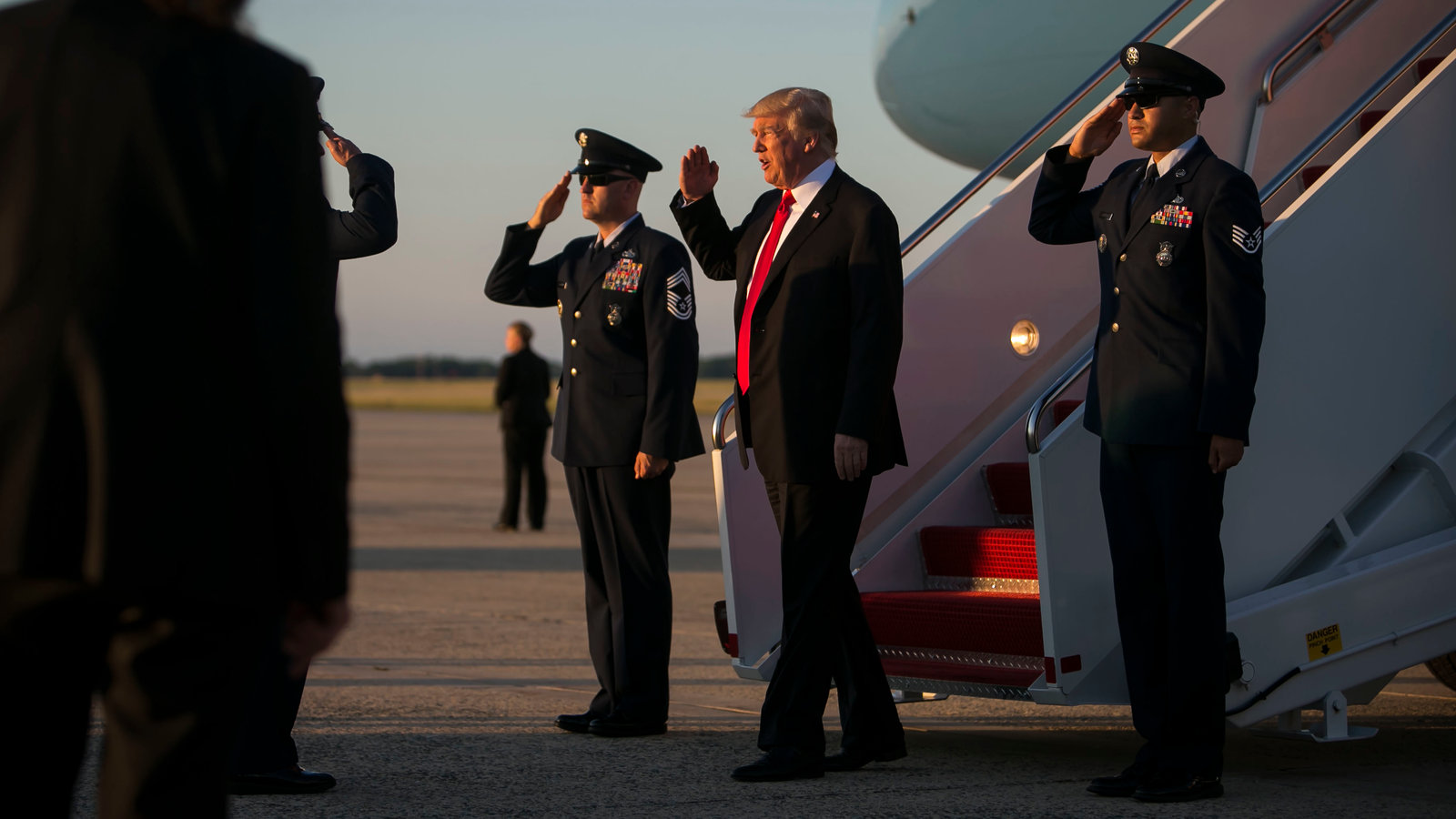Trump's Transgender Military Ban: Decoding The Double-Speak

Table of Contents
The ban, initially announced via Twitter, faced immediate legal challenges. The administration's shifting justifications and the subsequent court battles highlight a story of political maneuvering, conflicting narratives, and the significant impact on the lives of transgender service members.
The Official Justification and its Contradictions
The Trump administration offered several justifications for the ban, primarily focusing on perceived impacts on military readiness and financial burden. However, these claims often lacked factual basis and were contradicted by evidence and expert opinions.
Claims of Military Readiness
The administration repeatedly claimed that the presence of transgender service members would negatively impact military readiness. Specific claims included:
- Increased healthcare costs: The administration argued that providing gender-affirming care would strain the military budget.
- Disruption to unit cohesion: It was suggested that transgender individuals would disrupt the morale and cohesion of military units.
- Reduced combat effectiveness: The administration vaguely implied that transgender individuals were inherently less effective in combat roles.
However, these claims were largely unsubstantiated. Studies consistently showed that transgender individuals pose no significant threat to military readiness. In fact, many experts argued that inclusive policies foster a more diverse and resilient military force. The cost of healthcare for transgender service members was also consistently shown to be a small fraction of the overall military budget.
The "Burden" Argument
The narrative surrounding the supposed financial and logistical burden of accommodating transgender service members was a central component of the administration's argument. They pointed to:
- Costs associated with transition-related medical care: This was presented as a significant expense.
- Potential disruptions to training schedules: The argument suggested that accommodating transgender service members would necessitate adjustments to training programs.
- Alleged administrative complexities: The administration claimed that managing the inclusion of transgender individuals would be administratively burdensome.
However, the actual number of transgender service members is relatively small, minimizing the financial impact of inclusive policies. Moreover, the administrative burdens were often exaggerated, with many military branches already having systems in place to support diverse personnel. The supposed financial burden was greatly inflated to support the political agenda behind the ban.
The Shifting Narrative and Political Motivations
The administration's justifications for the ban evolved over time, revealing inconsistencies and exposing the underlying political motivations.
Changes in Rhetoric Over Time
The initial justifications focused on military readiness, later shifting to emphasize cost and logistical concerns. Examples of conflicting statements include:
- Initial emphasis on combat readiness, later shifting to cost concerns.
- Statements contradicting existing military policies on transgender inclusion.
- Inconsistencies between statements made by different administration officials.
These shifts suggest that the primary justification for the ban was not rooted in genuine concerns about military effectiveness, but rather served as a convenient cover for underlying political agendas.
The Role of Social Conservatism
Socially conservative groups played a significant role in shaping the policy and its messaging.
- Statements from prominent figures within the religious right strongly opposed transgender inclusion in the military.
- Conservative media outlets amplified these concerns, shaping public perception.
- Political lobbying efforts by these groups likely influenced the administration's decision-making process.
The ban reflected a broader political strategy targeting socially conservative voters, prioritizing their values over evidence-based policymaking.
The Legal Battles and Their Outcomes
The ban faced significant legal challenges, resulting in several landmark court cases.
Key Court Cases and Rulings
Numerous lawsuits were filed challenging the ban on the grounds of discrimination.
- The cases highlighted the violation of equal protection rights under the Constitution.
- Courts frequently ruled against the ban, citing lack of evidence supporting the administration's claims.
- The litigation significantly delayed and ultimately reversed the implementation of the ban.
These legal challenges established important precedents for protecting the rights of transgender individuals in the military and beyond.
The Impact of the Litigation on Transgender Service Members
The legal battles had a profound impact on the lives and careers of transgender service members.
- The uncertainty surrounding the ban caused significant stress and anxiety.
- Many transgender service members faced discrimination and harassment.
- The litigation process itself was emotionally and professionally taxing for those directly affected.
The prolonged legal uncertainty created a climate of fear and insecurity within the military community, highlighting the human cost of discriminatory policies.
Conclusion
Trump's transgender military ban exemplifies a clear case of political double-speak, with justifications shifting to accommodate political expediency rather than factual evidence. The ban’s supposed rationale of maintaining military readiness and managing financial burdens was consistently refuted by evidence. The underlying political motivations, fueled by social conservatism and electoral strategy, were far more influential than any legitimate concerns about military effectiveness. Understanding Trump's transgender military ban necessitates analyzing the interplay between political rhetoric, social conservatism, and the legal battles that ultimately reversed the discriminatory policy. We urge readers to continue researching this issue, contact their representatives to advocate for inclusive policies, and support organizations working to ensure the rights of transgender service members. By actively engaging with the impact of Trump's transgender military ban, we can contribute to creating a more just and equitable future for all.

Featured Posts
-
 Aocs Fact Check Of Jeanine Pirro Sparks Controversy On Fox
May 10, 2025
Aocs Fact Check Of Jeanine Pirro Sparks Controversy On Fox
May 10, 2025 -
 Rezoning Green Light Edmontons Anticipated Nordic Spa Project Progresses
May 10, 2025
Rezoning Green Light Edmontons Anticipated Nordic Spa Project Progresses
May 10, 2025 -
 Iron Ore Price Drop Chinas Steel Output Restrictions Explained
May 10, 2025
Iron Ore Price Drop Chinas Steel Output Restrictions Explained
May 10, 2025 -
 Posthaste High Down Payments A Barrier To Canadian Homeownership
May 10, 2025
Posthaste High Down Payments A Barrier To Canadian Homeownership
May 10, 2025 -
 Update Arrest Made In Connection With Elizabeth City Shooting
May 10, 2025
Update Arrest Made In Connection With Elizabeth City Shooting
May 10, 2025
